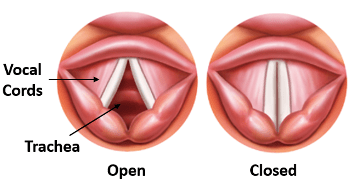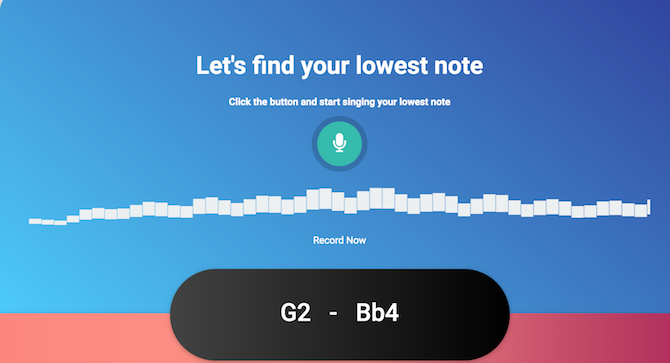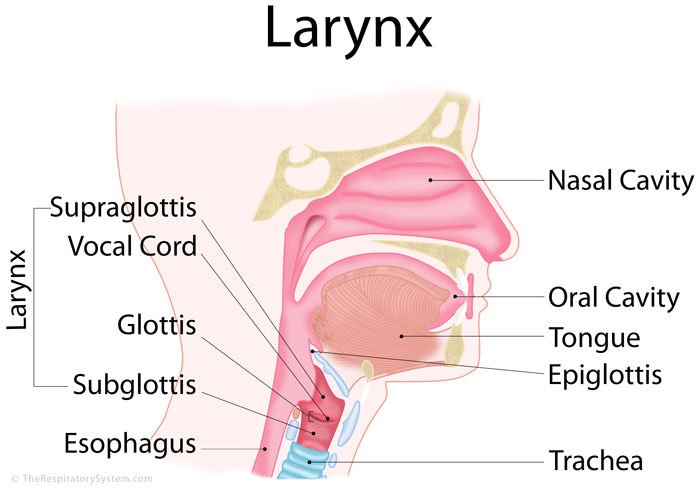Protect your voice. Avoid these 10 singing habits!
Let’s be real here guys: singing takes commitment.
No matter how dedicated you are, maintaining a good practice routine day in and day out is tough.
It gets easier! But doing it every day is the hard part. And over the course of your singing journey, some bad habits are bound to creep in.
Today, we’ll discuss 10 bad habits I’ve seen singers fall into over my 10+ years teaching 1,000+ students.
Some are physical; others are mental and psychological. But all can cause serious damage to your voice if left unchecked!
1. Reaching up for the pitch
When first learning how to sing, a lot of singers want to reach up with their voice to hit high notes. Like the high note is a cereal box on top of the fridge, and they’re on their tippy toes trying to grab it!
This makes sense. High notes are hard to reach, and singers feel like they have to “do something” to push their voice to hit them. They may raise their shoulders, raise their eyebrows or push up their larynx (or voice box).
But this does NOT help hit high notes. That’s because high notes are created by stretching the vocal cords in your throat. This stretching speeds up the vibration of the cords, producing a higher pitch.

That’s all it is. A stretching. There’s no up or down, higher or lower about it.
How to fix it
Next time you try to hit high notes, don’t reach up! The vocal cords don’t move up or down, so there’s no need to raise your shoulders or anything like that.
Instead, imagine yourself on top of the note. Rather than pushing upwards and straining your voice, approach the note from above and come down on top of it.
2. Singing outside your range
There are six main voice types we use in contemporary voice training. You know them!
From lowest to highest, they are:
- Bass
- Baritone
- Tenor
- Alto
- Mezzo
- Soprano
Each voice has its own range of notes, and discovering your vocal range is an essential step in your singing journey.
But, believe it or not, lots of singers haven’t explored the entirety of their vocal range. Singers will stretch and strain their voice to hit high or low notes rather than learn how to expand vocal range the right way. More on that in a moment…
How to fix it
Take your highest note, and subtract a fifth from it. If your highest note is G5, subtracting a fifth would put you at C5.
Likewise, find your lowest note and move up a fourth or fifth from that. If your lowest note is G2, start at C3.
The range we get — C3 to C5 — is a fantastic two-octave range and a great range for a tenor.
Need help finding your range? Use my free Rangefinder App to find your range in only 6 seconds!


3. Raising your larynx
So far we’ve looked at two bad habits that cause vocal tension. But what physically creates tension?
Well, a BIG one is raising the larynx.
The larynx is the hollow organ in your throat that houses your vocal cords.


Singers often raise their larynx to hit high notes. They’ll push their larynx and squeeze their vocal cords inside, producing a tight, nasal sound.
How to fix it
Yawn.
Seriously! A high larynx is the posture your throat makes when swallowing. To lower your larynx, do the opposite: yawn.
Try singing a simple phrase in the middle of a yawn and feel that vocal tightness wash away.
4. Nasal singing
As mentioned above, raising the larynx results in a tight, nasal sound.
But nasality can also creep into your singing even if your larynx is relaxed!
Nasality happens when the soft palate (tissue in the back of the throat, near the roof of the mouth) drops and the singing tone is forced above the soft palate and into the nasal cavity.
How to fix it
Take your thumb and first finger, and gently and intermittently pinch the upper part of your nose as you sing.
The more vibration in your nose, the more nasal your singing. If your singing is too nasal, pinching your nose will cause your tone to change slightly.
Adjust your tone and try to sing through your mouth instead of your nose, and reduce nasal vibration. If you’re singing correctly through your oral cavity, you shouldn’t hear any difference when pinching your nose.
5. Tongue tension
Almost all articulation of vocal sound comes from the tongue.
However, a lot of singers will do funny things with their tongue — especially, they’ll raise their tongue to the roof of their mouth during high notes. This produces a lot of tongue tension.
How to fix it
Check your tongue tension by feeling your digastric muscle. That’s the muscle beneath and behind the chin, right around the top front of your neck.
Put the tip of your thumb under your chin and slide it back until you feel that bouncy, smooth muscle directly under your tongue. Next, swallow. If you’re in the right place, you’ll feel the muscle press down against your thumb.
Finally, when you’re singing, you want this muscle to be totally relaxed. So we don’t want any tightness in the digastric like when you’re swallowing.
Check with your thumb and look for points in your singing when the muscle hardens. Try to relax your tongue and keep your digastric muscle soft and spongy.
6. Spreading the vowel
Vowel sounds are created by openings and closures in the vocal tract. Usually, it’s a specific kind of tongue shape.
Many singers want to spread the vowel wide, meaning that they stretch their mouth in ways they wouldn’t if just using their speaking voice.
The result is a flat, strained and weird-sounding vocal tone.
How to fix it
Sing like you speak!
Really! Sing the vowels like you would speak them normally, with the pitch adjusted to the tune of the music. Don’t stretch or widen any vowels.
If this is giving you trouble, try what I like to call the “Home Alone technique.”
Press your hands on both sides of your mouth, and sing a few simple phrases. Feel the edges of your mouth and make sure your mouth doesn’t spread past your fingers.
7. Singing too lightly
Many singers — especially those with a higher vocal range — will sing too lightly in the bottom part of their voice. The result is a lot of strain during high notes.
Why is that?
Well, typically, if the bottom part of your voice is unsupported, you’ll strain as you go to hit high notes.
Basically, instead of singing more fully in the chest voice, this means they’re using too much head voice.
Head voice is the breathy, lighter version of singing- generally in the top part of the singing voice.
But when singing, it’s crucial that your voice stays full and strong at all times, no matter your vocal range.
How to fix it
Practice some good old-fashioned chest voice!
Place your hand on your chest and say the phrase you’re trying to sing.
If you’re using proper chest voice, you’ll feel a vibration against your hand, including during the higher notes of the song. If you feel very little vibration, the balance of head voice and chest voice is off.
8. Flipping to falsetto
Many singers have a vocal break and flip into falsetto when transitioning to the top of their voice. This break occurs when the vocal cords shift from thicker to thinner.
Ideally, you want to keep your sound connected from the bottom of your voice to the top and back. Breaks should be barely noticeable, and falsetto should not be needed for most high notes.
How to fix it
A good exercise to smooth out vocal breaks is what I call the “bratty nay.”
Sing a simple 1.5 octave scale in whatever key you’re comfortable with, say C:


On each note, say “nay” like you’re a bratty little kid in a game of tag.
The “nay” sound trains your vocal cords to open and close evenly as you move from chest voice to head voice. This is the key to unlocking your mixed voice.
9. Too much vibrato
Vibrato is the trembling or shivering of the singing tone.
It can be natural or manufactured.
But too much vibrato — vibrato that’s too wide and too wobbly — is a tell-tale sign of a poorly trained singer.
It’s like oversalting your food. Exaggerated, overstuffed vibrato might sound cool but gets really old really fast!
How to fix it
DON’T add vibrato to every single note. Try using vibrato ONLY in these situations:
- Words with sustain, the ones you hold a bit longer than the others in a phrase
- Words with significance, key words that you want to pop out and grab the listener’s attention
Ideally, you’ll only use vibrato on notes that are BOTH of these.
The last word or syllable of a phrase is often sustained; this can be an ideal spot for some tasteful vibrato.
10. Over-practicing a song
Many singers will practice their favorite song over and over and over again. It’s understandable; we all have our song that we love above all others.
But here’s the thing. When a singer over-practices a song, they often also over-practice bad habits associated with that song. They keep digging themselves deeper into that hole.
How to fix it
Record yourself singing and check to identify specific problem areas within that song. Use a vocal exercise to identify issues and improve those problem areas.
Don’t be afraid to ignore lyrics! Say you’re flipping to falsetto. Use the “nay” exercise to smooth out the specific lines of the song where that’s happening.
Once you’ve improved in that area, return to the song and add the lyrics back in.
Conclusion
Whether you’re a veteran singer or starting out, I hope this article will help you overcome roadblocks you may be facing and build your confidence as a singer.
I promise that, if you put in the time and effort to ditch these bad habits, it will serve you well throughout your singing career.
Feel free to check out my Master Your Voice course for more tips and tricks on singing without straining.